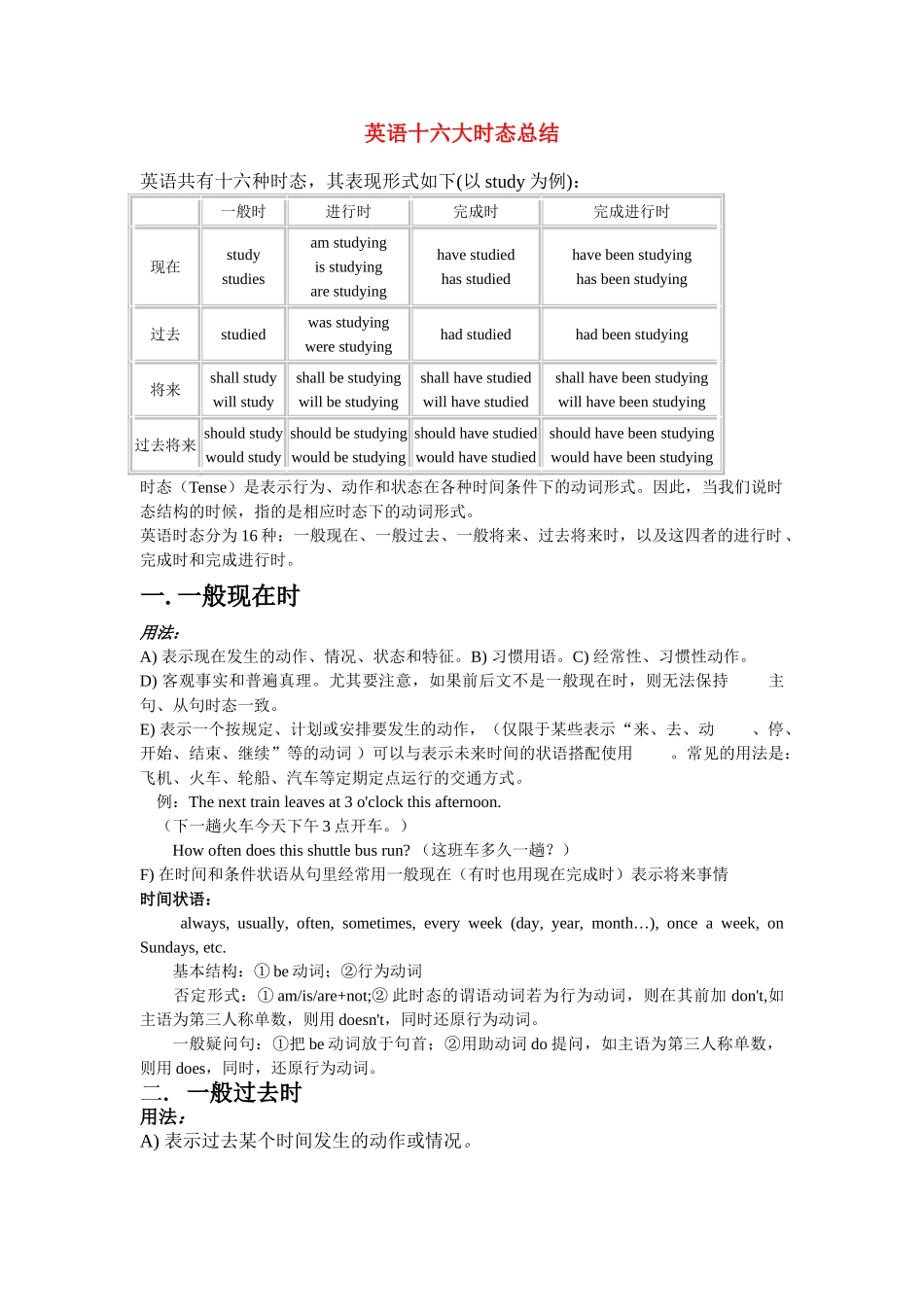英语十六大时态总结 英语共有十六种时态,其表现形式如下(以 study 为例): 一般时进行时完成时完成进行时现在studystudiesam studyingis studyingare studyinghave studiedhas studiedhave been studyinghas been studying过去studiedwas studyingwere studyinghad studiedhad been studying将来shall studywill studyshall be studyingwill be studyingshall have studiedwill have studiedshall have been studyingwill have been studying过去将来should studywould studyshould be studyingwould be studyingshould have studiedwould have studiedshould have been studyingwould have been studying时态(Tense)是表示行为、动作和状态在各种时间条件下的动词形式。因此,当我们说时态结构的时候,指的是相应时态下的动词形式。英语时态分为 16 种:一般现在、一般过去、一般将来、过去将来时,以及这四者的进行时、完成时和完成进行时。一. 一般现在时用法:A) 表示现在发生的动作、情况、状态和特征。B) 习惯用语。C) 经常性、习惯性动作。D) 客观事实和普遍真理。尤其要注意,如果前后文不是一般现在时,则无法保持 主句、从句时态一致。E) 表示一个按规定、计划或安排要发生的动作,(仅限于某些表示“来、去、动 、停、开始、结束、继续”等的动词 )可以与表示未来时间的状语搭配使用 。常见的用法是:飞机、火车、轮船、汽车等定期定点运行的交通方式。 例:The next train leaves at 3 o'clock this afternoon. (下一趟火车今天下午 3 点开车。) How often does this shuttle bus run? (这班车多久一趟?)F) 在时间和条件状语从句里经常用一般现在(有时也用现在完成时)表示将来事情时间状语: always, usually, often, sometimes, every week (day, year, month…), once a week, on Sundays, etc. 基本结构:① be 动词;②行为动词 否定形式:① am/is/are+not;② 此时态的谓语动词若为行为动词,则在其前加 don't,如主语为第三人称单数,则用 doesn't,同时还原行为动词。一般疑问句:①把 be 动词放于句首;②用助动词 do 提问,如主语为第三人称单数,则用 does,同时,还原行为动词。二. 一般过去时用法:A) 表示过去某个时间发生的动作或情况。B) 表示过去习惯性动作。特别是由 would/ used ...


